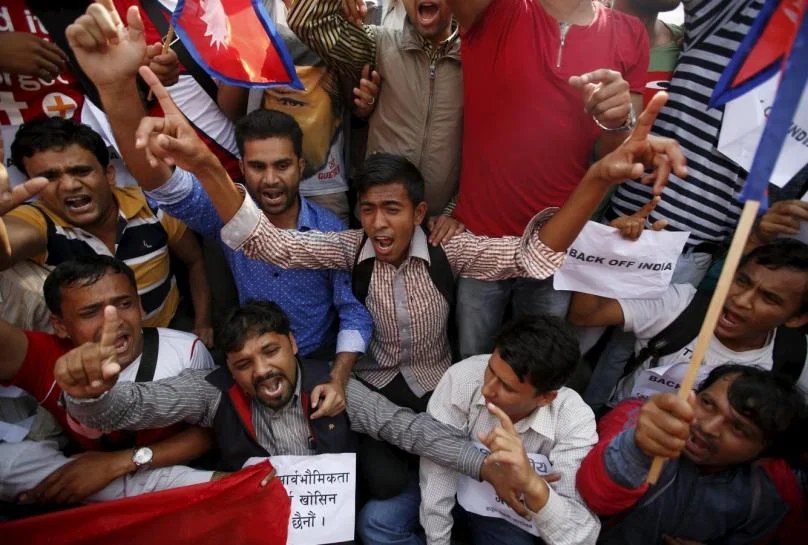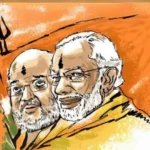It has not been unusual of the Indian nation to be in the headlines for very contrasting reasons, simultaneously. Its oft-heralded climb up the global economic ladder diverges wildly from its descent on the Global Hunger Index rankings. In another display of such dichotomy, Prime Minister Modi of India, while addressing a public function commemorating Phase I of the Mahakaal Lok Project, hailed the country’s scientific resurgence along with its ancient values rooted in faith, declaring, “Religion for India means a collective determination of our duties.” Merely a week before, Rajendra Pal Gautam, a two-time Aam Aadmi Party’s (AAP) Member Legislative Assembly (MLA) from Delhi, was forced to resign from the cabinet for jointly organizing an event with the Buddhist Society of India on October 5, 2022. Around 10,000 Dalits embraced Buddhism on the day and vowed to free India from casteism and untouchability.
These paradoxes have nearly taken over the very fabric of India; both as a state and a society. They are reminiscent of comedian Vir Das’ ‘Two Indias‘ satirical monologue in Washington DC last year, which sparked outrage at home and led to Bharatiya Janata Party’s (BJP) leader, Aditya Jha, implicating him of “maligning the image of the country internationally.”
These greatly incongruent narratives awaken ample curiosity if indeed there exist inconvenient truths that belie the myth of ‘Incredible India’.
Unraveling Indian Secularism
One such notion about India that is perhaps the most fiercely debated is its secular portrayal. Although the word ‘secular‘ was not added to the Indian Constitution until 1976, the country has long prided itself on egalitarian principles of social equity and non-discrimination since its independence in 1947. Besides lesser-known contradictions in the constitutional, legislative, and social framework to what is espoused on the global stage, there are relatively publicized instances of organized violence against religious minorities.
Contemporary discourse on the subject has inferred the causes of their marginalization in India to the BJP’s ascent to the highest political offices in India.
With its origins rooted in the right-wing, paramilitary organization Rashtriya Swayamsevak Sangh (RSS) and its Hindutva ideals, the ruling BJP is alleged to have paved the way for the erosion of Indian secularism.
Having gathered momentum by the 1990s, the demolition of the Babri Mosque in 1992 by organized Hindutva mobs is often traced to ‘Ram Rath Yatra‘, a religiopolitical rally organized by the BJP led by its then-leader, L. K. Advani. The event, which triggered widespread riots that killed thousands of Muslims across India, may be documented as a turning point for BJP’s political foothold in times to come, but not necessarily as the first instance of targeted violence against the country’s religious minorities.
Possibly among the most volatile of these chapters is the 1984 Anti-Sikh Riots, a series of organized pogroms in the aftermath of the assassination of Indira Gandhi by her Sikh bodyguards. The unrest is reported to have resulted in the killings of 3350 Sikhs nationwide, as per government figures. The assassination, itself, had been affected by Operation Blue Star, a military action ordered by her to secure the Harmandir Sahib Sikh temple complex in Amritsar in June of the same year that had resulted in deadly combat with armed Sikh factions who were demanding greater liberties and autonomy for Punjab.
Accordingly, a common theme to similar episodic uprisings inimical to minorities in the nation’s history is their endorsement or facilitation by the state.
Neighborhood Volatility and the Two-Front Dilemma
Yet another common feature of these offenses is the dismissal of any consequent international condemnation by proclaiming them to be ‘internal matters’. However, issues within the transnational or bilateral purview have on occasion not been accorded their equitable measure of leverage. Chief among disputes in India’s neighborhood is its rivalry with Pakistan over territorial claims to the erstwhile Princely State of Jammu and Kashmir. Barring wars and armed skirmishes across the established Line of Control (LoC) since 1947, the unilateral revocation in 2019 of Article 370 of the Indian Constitution which had conferred special status to Indian-occupied Kashmir, and its subsequent bifurcation into two union territories led to a further deterioration of ties with Pakistan.
With China, on the other hand, the Sino-Indian border dispute encompasses the Chinese-administered Xinjiang Uygur Autonomous Region and Tibet Autonomous Region claimed by India as part of its union territory of Ladakh, as well as the former North-East Frontier Agency south of the McMohan Line which became the Indian union territory of Arunachal Pradesh in 1972. In response to the first deadly skirmishes post-1962 Sino-Indian War between the two militaries in 2020 along the Line of Actual Control (LAC) in eastern Ladakh, India expressed the unacceptability of any “unilateral change of status quo” as well as a desire to work towards resolution in abeyance of “bilateral agreements and protocols,” a far cry from its stance on Kashmir.
In addition to India’s two-front dilemma are lingering border disputes with its much smaller neighbors. Nepalese government reacting to the Indian inauguration, in 2020, of a road link connecting to the border with China at the Lipulekh pass, which protested on account of the road’s traversal of its claimed territory and accused India of altering the status quo without diplomatic consultations, is one case in point.
The Quest: Regional Peace or Dominance?
Albeit isolated confrontations, they necessitate mention to analyze the broader context of India’s historically monopolistic dominance of South Asia.
India has exercised its influence over its smaller neighbors since the dawn of its independence in 1947.
Not only has it exerted tremendous proportions of unilateral political leverage in these nations, but it has also bolstered imbalanced associations with a few of them for several years and continues to benefit from numerous economic and political arrangements at their expense. In its 75 years, it has occupied one of these neighbors – namely, the once-independent Kingdom of Sikkim, intervened militarily in Sri Lanka, the Maldives, Bangladesh, and Bhutan, prompted clashes with all of its neighbors at various points in time, and meekly meddled in their internal conflicts.
In due consideration of controversial domestic conduct as well as prevailing differences with nearly all of its neighbors, it is necessary to examine whether India’s pursuits are a profound desire for greater connectivity in the South Asian region or merely an opportunist gamble for unquestionable dominance.
The views expressed in this article are the author’s own. They do not necessarily reflect the editorial policy of the South Asia Times.
Fariha Rashid is an independent research analyst with a keen interest in Indian affairs and history, driven by her love for diverse perspectives as an avid reader. She can be reached on X @_FarihaRashid_



![September 6th, a day for introspection! [Image via SAT Creatives]](https://southasiatimes.org/wp-content/uploads/2023/09/September-6th-150x150.webp)

Add a Comment